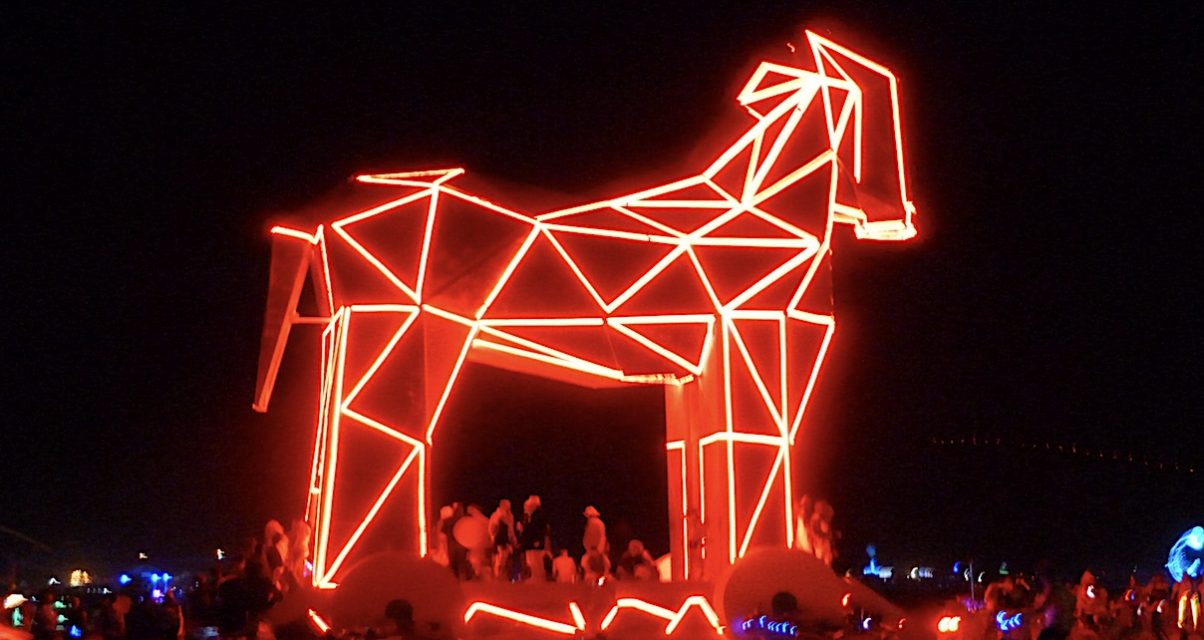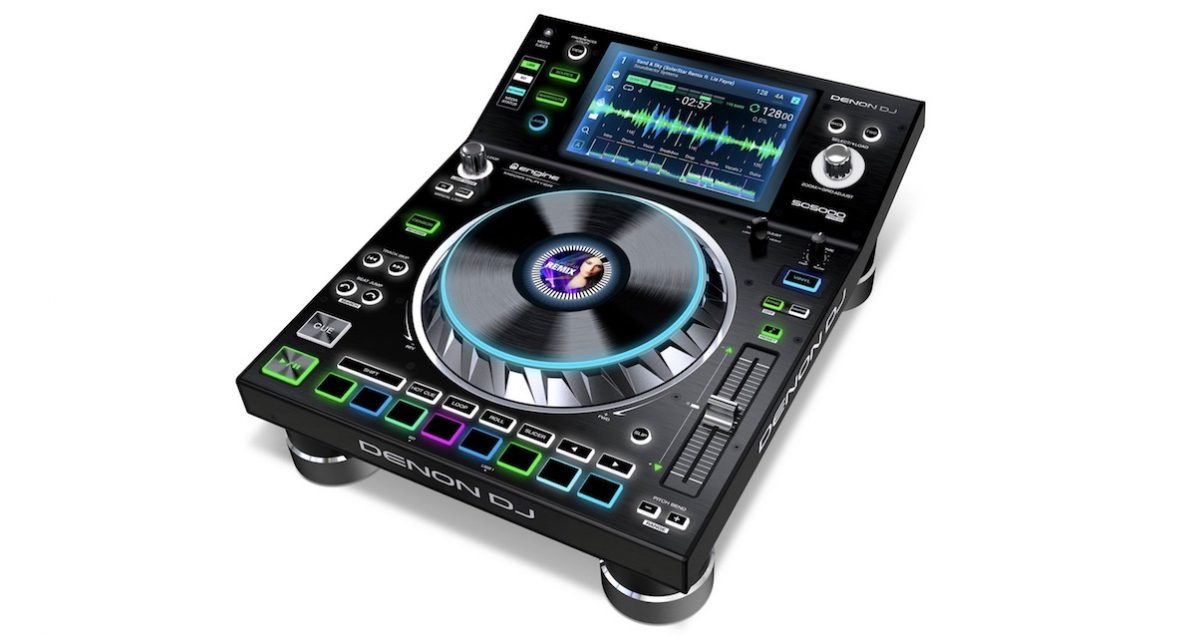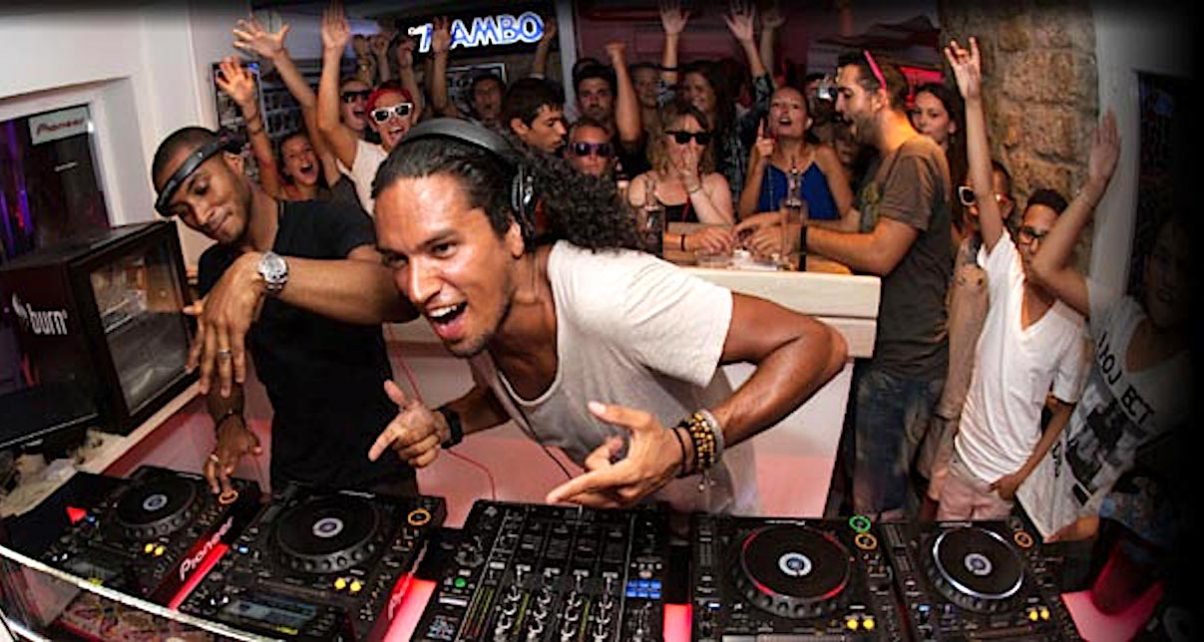
Denon DJ, if you haven’t noticed, just launched a full-out assault on the dominance of Pioneer DJ in the pro booth. The company’s Prime gear represents the most serious attempt by any manufacturer to challenge Pioneer’s stronghold in professional venues for decades.
With its technically impressive SC5000 Prime media player and X1800 Prime mixer, Denon DJ certainly has the goods. But will it pull this one off? Really, the stakes couldn’t be higher, and the outcome of the battle has repercussions clearly not only for both companies, but for DJs too.
The pace of change
Newer gear tends to be more technologically advanced, and so it is with the Denon’s SC5000 Prime player: It has a more powerful processor meaning it can do cooler things than the Pioneer CDJ-2000 Nexus 2 current flagship model.
For instance, this translates to clearer, smoother graphics more akin to a good iOS device or laptop than a display on a media player. It also means features that bring it into line with the best controller/software combos, including all the pad features we expect from controllers, as well as the ability to control two decks (or “layers”) with one unit.
This latter feature is something controller DJs take for granted, but that comes as revelation in a media player, and is a mark of how far behind pro DJ gear has fallen in recent years, when compared to software and controllers.
The battle lines are drawn
That lag, almost without doubt, is due to a lack of meaningful competition for Pioneer DJ for so long – which is why Pioneer DJ’s engineers are almost certainly working on Nexus 3 right now, and will try their hardest to catch up in all of these areas.
Pioneer DJ of course has a lot on its side, quite apart from the technology. It has longevity, consistency, backwards compatibility, and a stock with DJs that has been built up over many years. This is all valuable brand collateral and stuff Pioneer DJ’s top team know is their biggest strength. It is not just about technology and features: It’s about knowing what you’re going to get, and trusting a brand to look after you.

These are things Denon DJ has to convince anyone who switches over, and things Pioneer DJ already has, and thus only has to maintain to preserve that part of its advantage. Technologies change, but that trustworthiness built over years if not decades is something that money can’t buy, and is one of Denon DJ’s biggest challenges in the coming years if the Prime project is to succeed.
However, back to the title of this piece. To understand the one feature of Denon DJ’s SC5000 media player that may just swing things in its favour, we need to look at the way in which many DJs actually play nowadays, in 2017. Be prepared for a shock. It’s not pretty.
The truth about how many people DJ today
Many – if not the majority – of DJs in 2017 put tracks onto decks, cue ’em up in headphones, and hit play. Optionally, DJs who care about mixing adjust their tempo, and beatmix the tunes.
Erm, that’s it.
In the technological bubble we live in (among DJ tech sites and our associated audiences), with our library pre-analysis, and tagging, and sorting, and playlisting, and adding cue points, and beatgridding, and pre-preparing loops, and key analysis, and finger drumming, and daisychaining effects, and slicing, and loop rolling, and all the rest, it is sometimes hard to believe that working DJs – often our heroes – get a pile of tunes, and just play ’em. End of.
And here’s something else: There is a disproportionately high number of DJs at the top of the chain who do this.
Superstars, in festival booths. Household name producers. Veterans. Do you think these boys are pre-analysing, sorting, beatgridding and all the rest? Bollocks. Yeah, some are. You hear about those. They are the ones that get written about on DJTechTipsWorx and the like (and yes, that includes us).
But the rest just quietly go about throwing tunes onto decks and playing.
Why? Well, for one group of such DJs, it’s because they used to do the same with vinyl, then they moved to CDs. (Many still use CDs, by the way, but at least here, those numbers are dropping. Why? Because they’ve realised they can throw the same tunes onto USB drives and just play ’em from there. No need to burn to CD. Easier.)

For another group, it’s because they’re really producers who only DJ because it’s easy money, and because they are asked to – who wouldn’t? And the easiest way to DJ is the way I’ve just described. No need to get any more involved. (These people are generally shown the ropes by someone from the first group.)
For yet another group, it’s because the gear they use doesn’t even work with computers. Simple media players. Old dusty decks with USB slots. Cheap, durable, workaday stuff.
From South Africa to Sweden, Australia to Austria, Basildon to Boston, real DJs doing real work in real venues are walking up to whatever gear is there and slotting their USBs in and playing a load of tracks they’ve dumped onto those USBs, with zero previous preparation except dragging the stuff they want to play from a big folder on their PCs at home onto the USB drive or drives for that night.
Denon DJ’s “Trojan horse”
So with that in mind, here’s what I think is the killer feature of Denon DJ’s SC5000 Prime media player:
When you plug in a USB drive with a load of MP3s or WAVs thrown on it, it analyses them on the fly.
I’ll say that again: When you plug in any old music, the player analyses it there and then.
Let’s think about that for a second. The player is not only calculating BPM (everyone’s media players do that), but key, beatgrid, spectrum waveforms and all the rest. Once it has that information, it can enable all the features controller DJs take for granted, like key matching, sync and so on, but this time, with no computer or pre-preparation involved at all.
Now, the three groups of DJs named above won’t care about this – they just want to play their tracks. At this stage in their journey with Denon DJ, they won’t see much difference between Denon’s players and any other media player.

But… that next-level stuff is there, right under the surface. And given time, these DJs will notice. They’ll realise beatsync is a button push away. They’ll realise good tracks for keymixing are being suggested to them. They’ll realise they have four decks to use. In short, they’ll see all the features controller DJs, with their pre-prepped and analysed collections take for granted, winking and saying “give me a go!”.
And they’ll start using them. And when they do, they won’t care what secret sauce is making all that happen – they’ll just like it. And they’ll realise the competition hasn’t got it.
That is when they’ll start loving those Denon DJ players. and if word gets around, maybe, just maybe, Denon DJ will get its way and pro DJs will change their riders, just as Denon DJ’s #changeyourrider marketing hashtag has been imploring them to.
“There may be trouble ahead…”
I haven’t had a chance to review an SC5000 Prime in-depth yet, but I have played with them on three occasions since December last year, and the more I did, the more this feature stood out. It’s the simplest of things, which ironically demonstrates the power inside these players (they basically have computers inside – that’s how they can do it).
As stated earlier in the article, it’s going to be a hard road for Denon DJ to walk, but the fact is that DJs with their USB drives could use both brands’ players night after night, quite happily.
Bear in mind that many if not most Pioneer DJs don’t use Rekordbox to prep their music even now, just like most Denon DJs probably won’t use that company’s library prep software either (it’s called Engine Prime, by the way). That’s because, for the groups of DJs mentioned about, that is not how they’ve ever done it, and it would just be adding complication that they can ill afford the time for.

And when these DJs come across the odd Denon DJ set-up as they tour from booth to booth (and that’s Denon DJ’s uphill task: To get these installed anywhere), they are going to like them. And that is the Trojan horse that might just get the Denon its longed-for share of pro DJ booths.
As I said earlier, I think this would definitely be a good thing. Good for Denon DJ, obviously, and also good for Pioneer DJ, because it’ll force a faster pace of progress than might have happened had the company been left with a near-monopoly.
And despite the slight muddying of the waters that will occur with two brands vying for a space instead of one, ultimately, it’ll be good for DJs too, leading to more powerful and more exciting DJ gear in booths – whoever the manufacturer is.
What do you think? Does Denon DJ have a chance to establish itself with its SC5000 Prime players? Or will it take something else to break the “monopoly”? Or will Pioneer continue to dominate the pro DJ booth for ever more? We’d love to hear your thoughts in the comments.





![The Lifespan Of DJ Laptops [Live DJing Q&A With Phil Morse] The Lifespan Of DJ Laptops [Live DJing Q&A With Phil Morse]](https://cdn.digitaldjtips.com/app/uploads/2023/06/10145029/546463269-laptop-life-blank-website.jpg)


